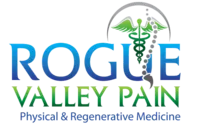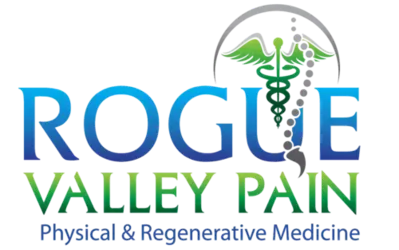Coming Soon!

PRP Therapy
Platelet rich plasma, commonly referred to as “PRP’, is a non-operative, permanent solution for conditions such as spinal conditions, arthritis, and orthopedic ligament/tendon sprains and tears. Utilizing the body’s natural healing process, PRP therapy is a concentration of the patient's own plasma rich platelets that are injected into the damaged tissues of the body such as ligaments, tendons, and joints to promote tissue repair and accelerate healing. Plasma is rich in growth and healing factors which means, on average, an injured individual can get back to a pain-free life sometimes within a few weeks or months depending on the severity and number of treatments needed.
CONDITIONS HELPED BY PLATELET RICH PLASMA (PRP) TREATMENT:
PRP injections are most effective for the following conditions:
- Neck, Back and Lower back pain
- Spine and Disc pain
- Rotator cuff injuries, including partial-thickness
- Shoulder pain and instability
- Tennis and golfer’s elbow
- Hamstring and hip strains
- Knee sprains and instability
- Patellofemoral syndrome and patellar tendonitis
- Ankle sprains
- Achilles tendonitis & plantar fasciitis
- Knee, hip, and other joint osteoarthritis
- Nerve entrapment syndromes, such as Carpal Tunnel Syndrome
- Sacroiliac (SI) joint dysfunction and pain
- Lumbar and cervical facet dysfunction and pain
Additionally, PRP can be effective for many cases of osteoarthritis by stimulating healing of cartilage and reducing pain and disability. This includes:
- Knee arthritis
- Hip joint arthritis
- Shoulder arthritis
- Ankle arthritis
THE BENEFIT OF PLATELET RICH PLASMA (PRP) TREATMENT, A NON-OPERATIVE OPTION
PRP treatment can allow patients to experience a long lasting, permanent solution that will not wear off over time as with a traditional pain injection. For this reason, the use of PRP helps heal the affected areas and regenerate damaged tissues. I can help a patient avoid joint replacement surgery, and potential back surgery. As with any treatment option, the effectiveness of the treatment depends upon the severity of the injury or condition. Many traditional, non-operative treatment options concentrate on relieving pain, without fixing the underlying cause.
WHERE PLATELET RICH PLASMA (PRP) COMES FROM
The creation of PRP comes from your own blood. It is a safe simple, painless, and conveniently done at your office visit. The entire process of drawing blood to solution preparation only takes approximately 25-30 minutes. A small amount of blood is drawn from the patient, just like a routine blood test.
The blood is drawn into a special container then placed into a centrifuge. Which spins the blood at high speeds in order to separate the blood into red blood cells and concentrated platelets.
Once the blood is separated the red blood cells are discarded, and we are left with concentrated platelet rich plasma (PRP) which is ready to be used in the treatment process.
ADMINISTRATION OF PRP THERAPY
The injection process is often about 30 minutes. We use GUIDED ULTRASOUND to target the tissues specific to the site of the problem. The platelet-rich portion is then injected back into the injured tendon, ligament, muscle, joint, or disc that has been determined to be the pain generator and is not-healing appropriately.
As mentioned above, ultrasound-guidance is commonly used to inject PRP into the appropriate tendon, ligament or joint that is being targeted.
Injections are performed under image guidance to assure precise placement of PRP. Patients typically experience significant reduction in pain after the first or second injection.
Generally speaking PRP injections are not painful; however, the discomfort level depends on the part of the body being treated. Injections into the joint are of minimal discomfort. There is sometimes a small amount of pain after the procedure; however, this does not last more than a couple days and can be minimized with over the counter Tylenol. ***It is critical to avoid anti-inflammatory medications (NSAIDs) such as Aleve, Motrin / Ibuprophen, Celebrex, Naprosyn, and Mobic. These drugs may impede the healing process.***
WHEN TO EXPECT TO FEEL BETTER AFTER PLATELET RICH PLASMA (PRP) TREATMENT
The benefit to PRP is that unlike other treatments it has a sustained outcome and can possibly be categorized more as a permanent fix.
The timeframe for experiencing results is dependent upon the area of injury and the extent of the injury. On average, most patients start to see signs of improvement in the form of reduced pain or increased function within weeks.
Continuing a well-designed course of conservative therapies such as Pain Management, Manipulative therapy/Chiropractic, Massage and Physical therapy and avoidance of aggressive physical activity or overloading the injected tissues is advised in the weeks that follow the injections.
RISKS WITH PLATELET RICH PLASMA (PRP) TREATMENT
Generally speaking, PRP is accepted as an especially safe treatment option with no risk of allergic reaction because it is your own blood. However, anytime a needle is placed in the body, there is a some risk of infection, bleeding, and nerve damage. These risks do not happen very often and are very rare. Other risks depend on the area being treated. If you are unsure of the risks of your specific condition, consult your primary care physician.
In general, PRP is not considered a first line treatment and is usually considered after other more traditional treatments have failed.
If you think you may benefit from Platelet Rich Plasma treatment, give us a call at Rogue Valley Pain, Physical & Regenerative Medicine (541) 200-0929 to schedule your initial consultation.

